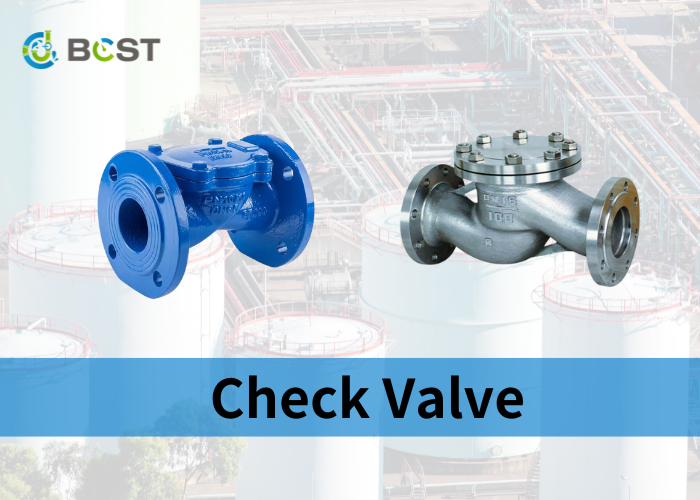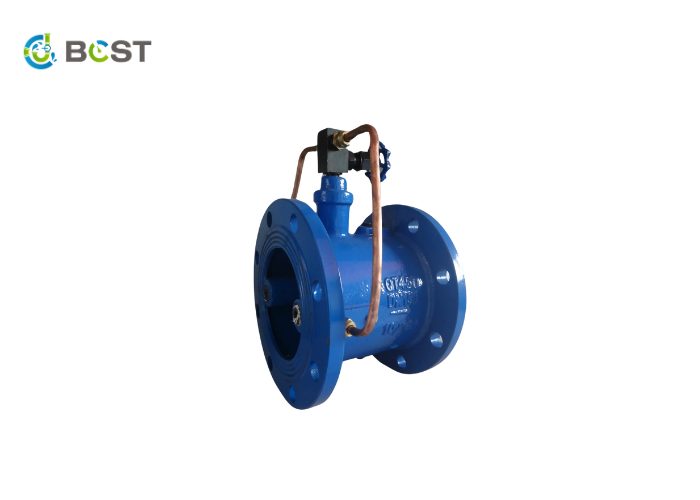
Check valves, often known as “one-way” valves, are self-operated unidirectional valves that allow fluid to flow in only one direction, decreasing or preventing backflow. They are created with key factors in mind, like the fluctuating nature of the closing assembly and pressure changes in the fluid flow upon closing the flow restrictor. One of the most important considerations while installing a check valve is the orientation in which it is to be installed.
Various accessories such as hinges, pistons, screens, and flaps are employed in the check valves. In simplistic terms, however, a flap allows flow in one direction while restricting it in the other, hence the name “one-way valve.” Most check valves differ in the manner in which the flap is attached to move with the fluid flow. It can be sustained by a spring (double door check valves), by gravity (swing check valves), or by a combination of the two. Check valve types include ball check valves, Y-type check valves (which are occasionally used in conjunction with a swing or ball check valve), and foot valves, which feature a screen and, as the name implies, are used at the end or foot of a pipeline.
Water Flow and Pressure in Piping Systems
Water pressure is the force exerted on water to push it through the pipeline. It can be made naturally (gravity) or intentionally (pump). The volume of water flowing through a pipe at any particular time, on the other hand, is referred to as its flow. Consider the diameter of a pipe to better comprehend their relationship. Given the same source, a wider pipe will allow more water to flow through it, but the water will flow more slowly since less pressure is applied. However, the greater the water flow, the greater the pressure, and vice versa. Therefore, the flow-pressure relationship is complex.
The cracking pressure of the water check valve you intend to utilize should be considered. The precise upstream water pressure at which the valve ‘cracks’ open permits quantifiable fluid flow. The force required to open the check valve, which may be determined by the tightness of the spring or the weight of a gravity-operated flap, influences the cracking pressure.
While overall system usage influences the pressure drop across a check valve, three key factors about the valve’s implementation influence this calculation: the specific gravity of the fluid, the flow coefficient, commonly known as the Cv characteristic, of the individual valve in question, as well as the media rate. The pressure drop increases as the flow rate of the media through the valve increases. Similarly, raising the specific gravity of the flowing medium will result in a greater pressure drop. A bigger flow coefficient, on the other hand, correlates to a lower pressure drop.
Gravity-supported water check valves, such as swing and tilting disk check valves, are generally the best to use horizontally and in low water pressure circumstances because the force required to open the restricting flap is negligible. However, they may need to be revised in vertical applications. Spring-forced valves, on the other hand, require more water pressure to function because they have a tighter backflow resistance and can be installed in either direction. Restrictor water check valves are the most optimal for changing water pressure situations due to their multi-spring assemblies that allow you to set the cracking pressure of your choice.

Check Valves Limitations
Check valves have numerous advantages, but they also have significant drawbacks that, if not addressed promptly, have the potential to inflict massive damage to piping systems.
Minerals and particles can accumulate on and around the valve, particularly the closing assembly, depending on the fluid going through it, preventing the valve from closing properly and stopping reverse flow. This would completely defeat the purpose of having a check valve. Therefore, the flowing media should be given attention, and the check valves should be maintained or replaced accordingly.
Chemical compatibility is another vital consideration. The check valve material, both body and valve seat, must be compatible with the media flowing through it. Incompatibility can lead to the destruction of the valve.
Reverse flow may also become an issue if the check valve is oversized or not sufficiently fast at closing. Similarly, if the valve is not sufficiently fast at opening, the water flow (or other media) can be restricted, increasing water pressure and damaging pumps and other fittings in the piping system.
Water hammer is one of the most prevalent problems that plague piping systems and is an important factor to consider when choosing the right check valve for the job.
Water hammer happens when an influencing factor, such as a pump shut off or a point of use closure, causes the flowing media to stop or change direction, resulting in a hydraulic shock wave that ripples through the piping, potentially destroying equipment, instrumentation, or even the piping itself. Choosing the correct check valve for a water hammer-prone application can help prevent these harmful surges.
What Causes Valve Failures? How to address them?
As previously stated, a failed check valve can cause significant damage to the piping equipment. However, valves exhibit warning indications that, if addressed, can avoid damage over time.
Excessive noise, vibration, and wear and tear of internal valve components are some early warning indicators to look for. In extreme cases, reverse flow and water hammer are also clear indicators of a malfunctioning valve. These difficulties can be avoided at first, but they may require corrective measures later on.
Appropriate sizing, reaction rates, and chemical compatibility are all critical factors in preventing valve failure. Filters should be installed wherever possible to assist in preventing buildup and extending the life of your check valve.
Corrective measures may be necessary in addition to the preventive maintenance measures outlined above if the valve is beyond repair.The valve can be replaced with a new one of the same type. However, there are occasions when it is necessary to replace the valve with a different one entirely, possibly due to size, type, closing assembly, or reaction speed factors.

BCST Check Valves
Unlock the power of BCST Check Valves today! Enhance your fluid systems with precision and reliability. Shop now! Experience seamless flow control with BCST Check Valves!
Visit our website at www.bcstvalve.com.






